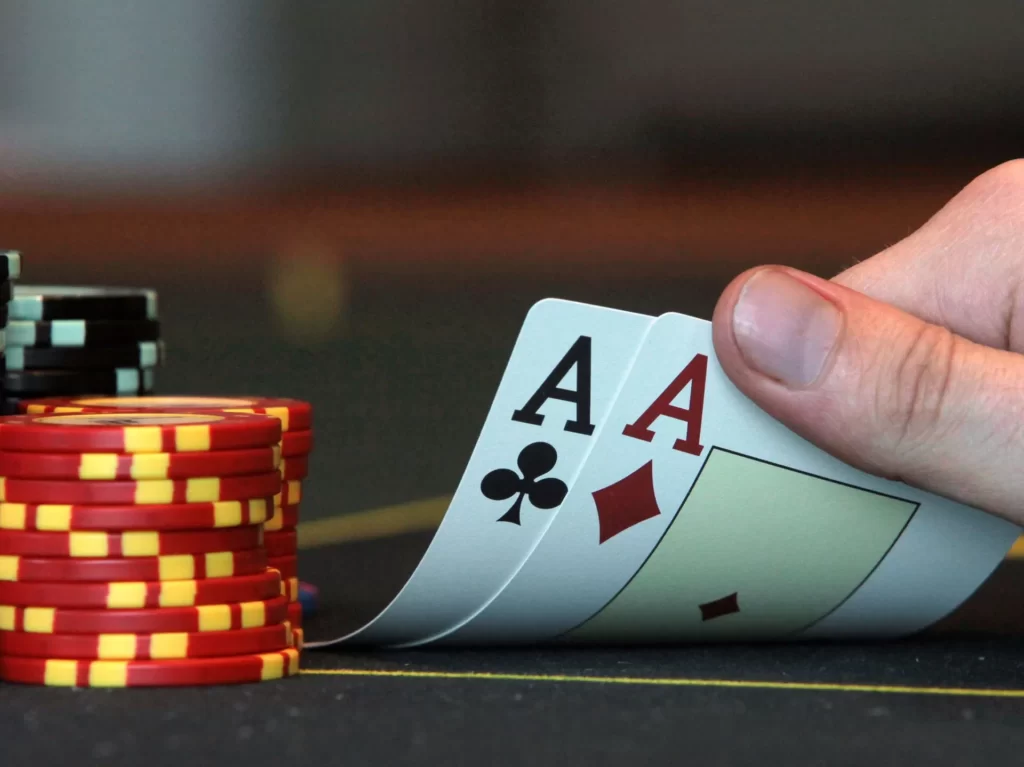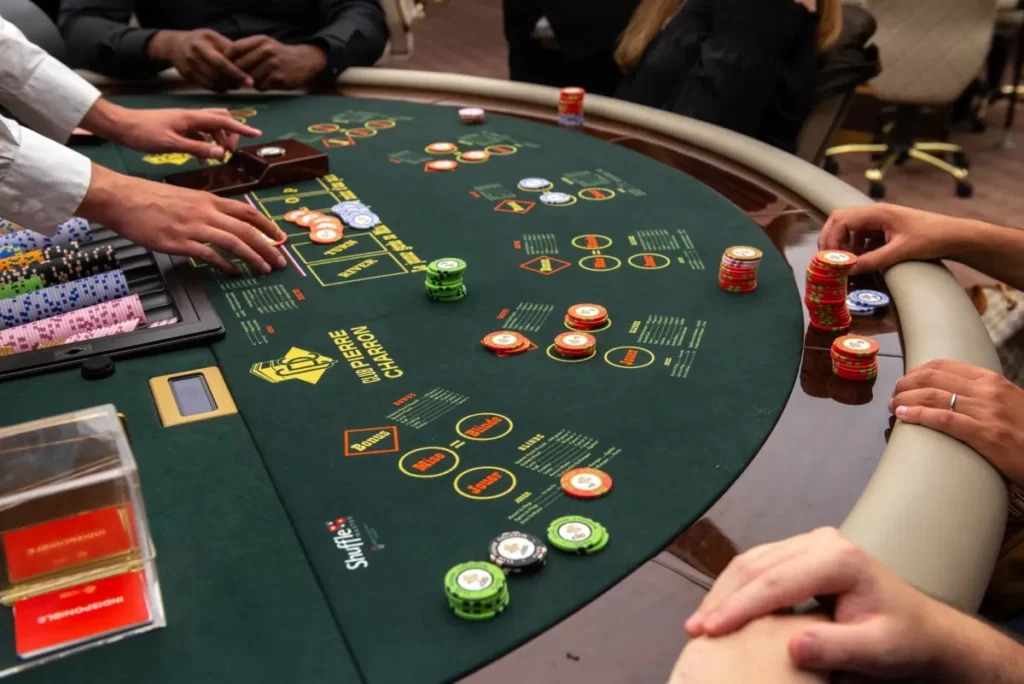The card game has come a long way from a simple game of chance to a recognised intellectual sport. The history of poker spans many decades and in that time the game has evolved from a cowboy pastime to a contest of wits that requires skill and deep analysis.
How poker became an intellectual sport
Poker originated in the United States in the 19th century and became one of the main pastimes in the saloons of the Wild West. At the time, the game was synonymous with risk, adventure and late-night parties filled with jingling pitchers and loud clapping of cards on the table. Saloons were where cowboys, travellers and fortune seekers could try their luck at this dynamic card game. The history of poker originated there, in a world where everyone was willing to risk everything to try their luck.

Many players used all means to win: bluffing and even cheating were considered part of the rules. Legends and myths swirled around this pastime, which soon became part of American folklore. Wild West saloons were the place where fortunes changed in a matter of minutes, and the loser often lost not only money but also respect.
Legends and myths: how gambling became a strategy
At first, entertainment was based solely on luck: the better the cards, the greater the chance of winning. But by the mid-19th century, masters appeared who saw the game not just as a game of chance, but as an arena for strategic skill. The history of poker began a new chapter with the concept of bluffing, a technique that allows you to win even with the weakest cards.
One of the first to change the approach to the game was Johnny Moss, a legendary player considered one of the first professionals in poker history. In 1949, he participated in a famous game with Nick Greck Dandolos, which took place at Binion’s Horseshoe Casino in Las Vegas and became a truly historic event. They played a series that lasted five months, in which colossal sums of more than two million dollars were at stake.
The game, known as The Biggest Game in Town, attracted a lot of attention from the public, including journalists and other gamblers. The match symbolised the transition from luck to a real intellectual battle, where every move was thought out several moves in advance. Johnny Moss managed to beat Dandolos and this cemented his status as a legendary master. Bluffing then became a stage art, where even a weak hand could be turned into a victory through psychological pressure and skill.
A turning point in history: poker as a sporting discipline.
 Big tournaments like the World Series of Poker (WSOP) played a key role in the transformation. The first WSOP was held in 1970 at Binion’s Horseshoe Casino in Las Vegas and brought together some of the most famous players of the time. The competition was conceived by Benny Binion as a way to determine who the best players were through a series of matches. Over time, the WSOP became not only a prestigious event, but also the platform on which poker made history on the world stage.
Big tournaments like the World Series of Poker (WSOP) played a key role in the transformation. The first WSOP was held in 1970 at Binion’s Horseshoe Casino in Las Vegas and brought together some of the most famous players of the time. The competition was conceived by Benny Binion as a way to determine who the best players were through a series of matches. Over time, the WSOP became not only a prestigious event, but also the platform on which poker made history on the world stage.
Television broadcasts of the WSOP and other major tournaments made the discipline popular. In 2003, Chris Manimaker’s victory in the WSOP Main Event was a real sensation. He qualified as an amateur via online satellites and then won the Main Event, becoming the first person to do so. This incident went down in poker history as one of the highlights when an amateur was able to beat the pros.
Professionalisation of poker: steps towards sporting recognition
The professionalisation of poker began with the first professionals, such as Doyle Brunson and Johnny Chan, who became the epitome of sporting discipline. They won systematically and developed strategies and approaches that could be reproduced and analysed. Important was the introduction of the concepts of ‘bracelet’ and ‘championship title’, which created prestige around the competition of the discipline and emphasised the sporting element of the game.
Poker today: officially recognised as a sport and a new philosophy
Today, poker is officially recognised as a sport in several countries. In Russia, for example, card games were recognised as a sporting discipline in 2007, an important step towards legalising tournaments and establishing clubs. In other countries, such as Brazil and Germany, poker is also considered a sport that requires concentration, skill and strategy.
Over time, public attitudes have changed. In the beginning, cards were considered a game for cheaters. The efforts of professional players, the support of the media and the legalisation of tournaments have ensured that poker is now part of the cultural heritage and history of many countries.
A new philosophy: from bluffing to intellectual combat
Today, the discipline is seen as an intellectual duel in which every move is analysed and every decision can lead to victory or defeat. The emergence of concepts like ‘game thinking’ and the use of psychology to predict an opponent’s actions have brought a new depth to the history of poker:

- Every move and decision is carefully analysed and the final outcome – winning or losing – depends on it.
- Modern players use strategies that go far beyond card combinations. They evaluate probabilities and build scenarios several moves in advance.
- Understanding the behaviour and psychology of opponents has become a key element of success. Players like Daniel Negreanu actively apply psychological principles to predict their opponents’ actions.
- Successful players use analytical techniques to increase their effectiveness at the table. Many pros record their games to analyse mistakes and improve their strategy.
- Technological innovations to complement the story: poker is even more accessible today. Online platforms enable mathematical simulations and data analysis, which is a major advantage for those who want to improve their skills.
Conclusion
 The history of poker is a journey from a game of chance and risk to an intellectual discipline requiring skill, analysis and in-depth strategy. The transition from entertainment to sport was made possible by the efforts of professional players, the support of the media and the popularisation of tournaments around the world.
The history of poker is a journey from a game of chance and risk to an intellectual discipline requiring skill, analysis and in-depth strategy. The transition from entertainment to sport was made possible by the efforts of professional players, the support of the media and the popularisation of tournaments around the world.
 en
en  ru
ru  de
de  ar
ar  es
es  nl
nl  hi
hi  fr
fr  it
it  pt
pt  el
el 











